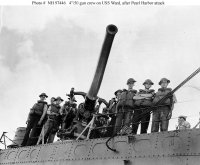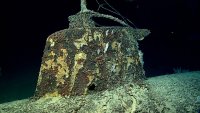Col. Gail Halvorsen, USAF, Ret. took off on his final mission Wednesday, 16 February 2022.
For those of you who don't know who he is, I wrote this some two decades ago:
THE CANDY BOMBER
On a hot August day in Sevierville, two men shook hands and introduced themselves. The older of the two wore a worn flight suit with his name on the right breast pocket. He still had the sharp, clear eyes of a born flyer. On his head, at a jaunty angle, was his Army Air Force cap with its “50-Mission Crush.”
As they stood in the shadow of a 50-year old C-54 transport, the two made small talk. The younger man found himself transported back 30 years or more. Once again he was a ten year old lying on the floor reading of a man called the “Candy Bomber.” The boy’s imagination was captured by the story of an American pilot who, during a dark time in history, had done something so simple and yet so touching that as the boy grew older he never lost his fascination with it.
Germany lay shattered. The Second World War had visited death and destruction throughout the land. In 1933, Adolf Hitler, the manic, tortured, evil leader who was alone responsible for the war in Europe had promised his people, “Give me ten years, and you won’t recognize your towns.” The air forces and armies of the allies had made that promise come true. One by one the great German cities were destroyed: Hamburg, Cologne, Bremen, Munich ... Berlin. By early 1945, most allied bombing missions did little more than toss the rubble about. Germany lay prostrate as the allies closed from the east and the west. In May of that year the Soviets and Americans met at the Elbe River. Hitler committed suicide. The war ended.
The vast evil that was the Third Reich was no more. The victorious armies of America, Britain, France and the Soviet Union had divided Germany like a pizza. Each nation had its own sector of occupation. The British, French and Americans occupied western Germany and the Soviets the east. Berlin, the German capitol, lay deep in the Soviet Sector. The sprawling city was treated as a separate entity, and divided among the allies in a mirror of the overall occupation. All roads, canals and railroads connecting West Berlin with the outside world, though, ran through the Soviet sector.
Relations between the Western Allies and the Soviets began to deteriorate almost immediately. Russia was in the grip of its own totalitarian monster, Josef Stalin. Stalin ordered his military and intelligence forces to continually push the other allies for any sign of weakness that might be exploited. On June 24, 1948, events reached crisis proportions. The Soviets shut off all road, rail and barge traffic from West Germany to Berlin to force the allies to give up their sectors: Stalin wanted
all of Berlin.
The Soviets ignored the three air corridors into the city, though. After all, Berlin needed thousands of tons of supplies each day: food, coal, soap, light bulbs, and other sundry necessities of everyday life. Too much tonnage, they believed, for air supply to make any difference. The Russians also had history on their side. During the epic battle for Stalingrad in 1943, the Red Army had cut off a German field army in that city and the
Luftwaffe had been unable to supply them. The tattered, starving men of German
VI Army had surrendered and marched off into captivity. Stalin’s planners were confident the same formula would work against Berlin.
The Soviets failed. They failed because they forgot one important thing, the Americans owned more airplanes than anybody else. The word went out: pilots were needed for the largest air operation since the end of the war. Grizzled reservists, many with sterling combat records, were teamed with fledgling pilots straight out of flight school. All were needed as a vast fleet of transport aircraft assembled in West Germany for what became formally known as the Berlin Airlift but will always be known to flyers as “Operation Vittles.” The first days were frustrating, small tonnages were delivered and large problems in communications and air traffic control cropped up. As the problems were resolved, though, the tonnages delivered soared. The airlift began to resemble a vast railroad in the sky. Twenty-four hours a day, seven days a week, aircraft roared along the air corridors, the lowest tooled along at 5,000 feet, above them were streams of transports at 500 foot intervals, each aircraft 15 minutes behind the plane in front and only three minutes behind the aircraft in the stream just above it. By the autumn of 1948 tonnages delivered began to match bare necessity and grew from there. It was during this period that a legend was born.
A young American pilot, Capt. Gail Halvorsen, noticed ragged German children playing under the approach path to Templehof Airport, the main airfield in Berlin. They would look up hopefully to the planes roaring overhead. Occasionally a pilot would wave and they would wave back. Halvorsen took it one step further. Back at his home field he began to think of those kids and resolved to do something for them: but what? If he dropped something from the plane - given its speed and altitude - even something as innocuous as a candy bar could become a lethal missile. As Halvorsen puzzled, he had an inspiration. He took one of his handkerchiefs, tied the four corners of it to a candy bar and
voila! Now he could parachute the goodies to the children on the ground. After the first few drops, the kids knew Halvorsen’s transport on sight and eagerly awaited the floating bags of treasure.
The idea spread quickly, soon
all the Americans were doing it. As Christmas approached the men of Operation Vittles mounted “Operation Santa Claus” and thousands of little parachutes fluttered all over Berlin bringing toys and more candy to those too young to understand the sordid conflicts of so-called adults. Every doll, every candy bar, every treat was paid for by the men themselves.
By spring, the Soviets knew they had lost. In one 24-hour period in April, 1949, over 13,000 tons of supplies had been delivered. On May 12, the blockade was lifted. Operation Vittles was over. There had been crashes and accidents, 31 Americans lost their lives in this effort to keep strangers free. There is a memorial to them and all the flyers of the Berlin Airlift at Templehof International Airport in Berlin, now the capital of a free and democratic republic.
The two men stood chatting on a hot August day in Sevierville. Colonel Halverson said, “It’s been good to meet you.” The younger man could only reply, “Sir, it’s been an honor to meet you.”
Pat Gang
April12, 2002
© 2002. Pat Gang
Godspeed, Colonel.
Col. Halvorsen tosses candy to the crowd at Templehof Airport, Berlin, Germany in 2005 (USAF)




